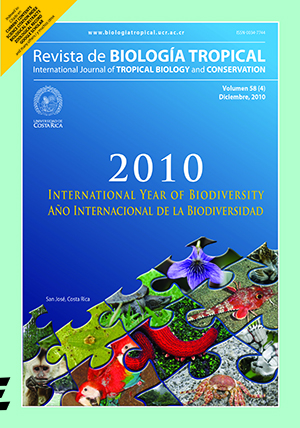Abstract
Protein quality mainly depends on the essential amino acid (EAA) profile, but also on its bioavailability, because EAA digestibility is generally lower than the analyzed amounts. This information is needed in the aquaculture industry for aquafeed formula-tion. For this purpose, the apparent digestibility coefficients of dry matter, protein, and essential amino acids of eight feedstuffs of terrestrial origin were determined for the juvenile whiteleg shrimp Litopenaeus vannamei(15-19g), using 1% chromic oxide as an inert marker. A reference diet was formulated and produced in the laboratory. Eight experimental diets were prepared each with 30% of one of the experimental ingredients added to the reference diet: casein, porcine byproduct meal poultry byproduct meal, corn meal, wheat gluten meal, soy-bean paste, sorghum meal, and wheat meal. The experiment consisted of a single-factor, completely randomized design with three replicates per treatment. Samples of ingredients, diets and feces were analyzed for nitrogen and amino acids. For amino acid assay, we used reverse-phase high performance liquid chromatography. To avoid partial loss of methionine and cystine, samples of ingredients, diets, and feces were oxidized with performic acid to methionine sulfone and cysteic acid prior to acid hydrolysis. The apparent dry matter and protein digestive utilization coefficients varied from 68% to 109% and from 70% to 103%, respectively. Apparent digestibility of protein for casein, soy paste, wheat meal and wheat gluten were very high (over 90%), corn gluten and poul-try byproducts meal showed high protein digestibility (over 80%), but porcine byproducts meal and sorghum meal had low digestibility (76% and 70%, respectively). There was a reasonable, but not total, correspondence between apparent protein digestibility and average essential amino acid digestibility coefficients, except for arginine in corn gluten, phenylalanine and leucine in sorghum meal, phenylalanine in soy paste and lysine in wheat meal and poultry by-product meal. The most digestible feed ingredients for whiteleg shrimp were: wheat gluten, wheat meal and soy paste; poultry byproduct meal and corn gluten were less digestible and the lowest digestibility occurred in porcine byproduct meal and sorghum meal. Feedstuffs exhibited great variability in dry matter, protein and amino acid digestive utilization coefficients, which should be considered when formulating shrimp feeds.
##plugins.facebook.comentarios##

This work is licensed under a Creative Commons Attribution 4.0 International License.
Copyright (c) 2010 Revista de Biología Tropical






